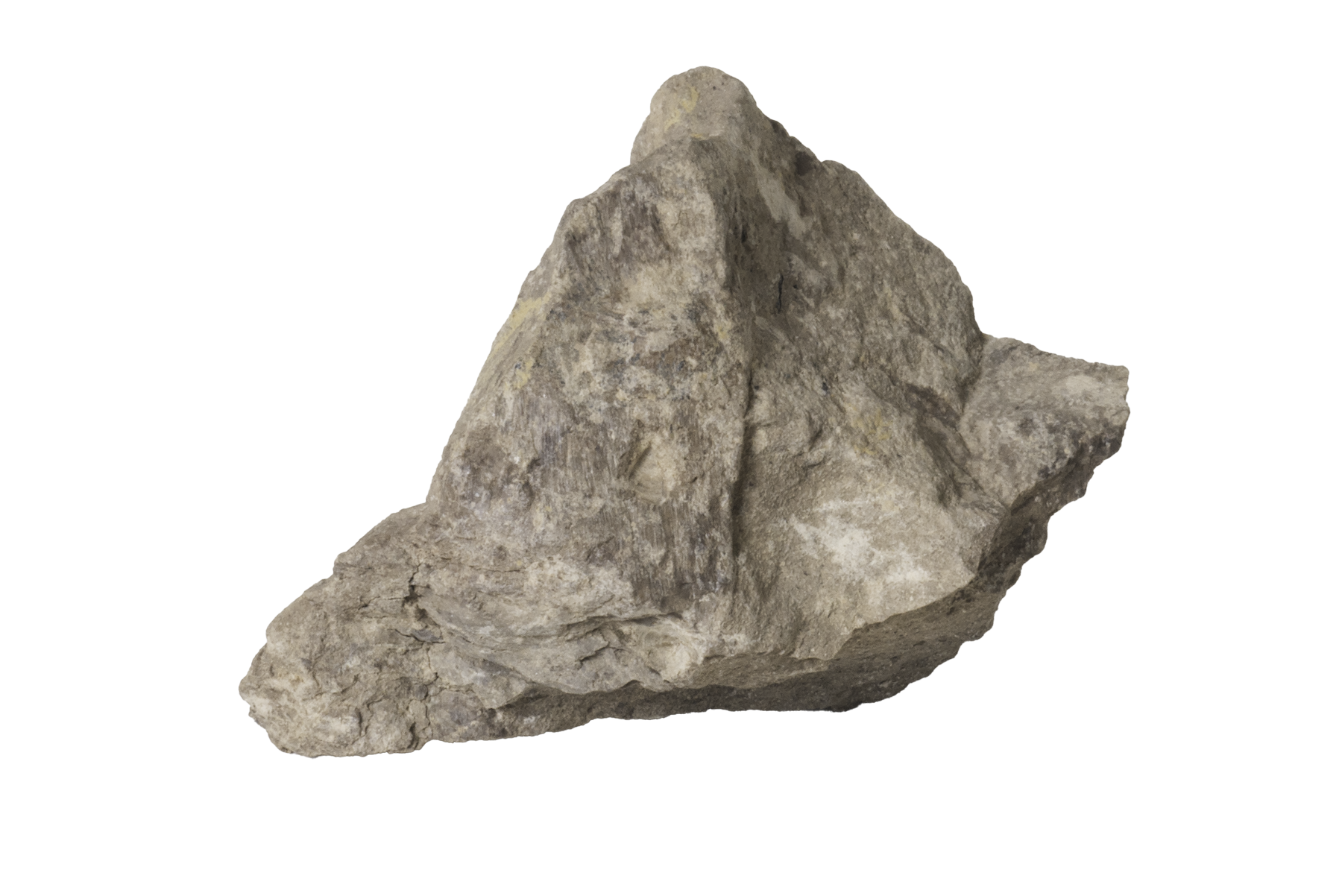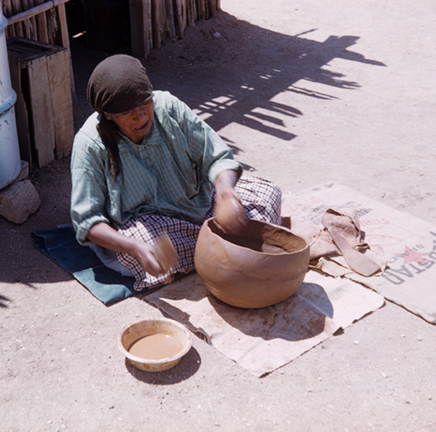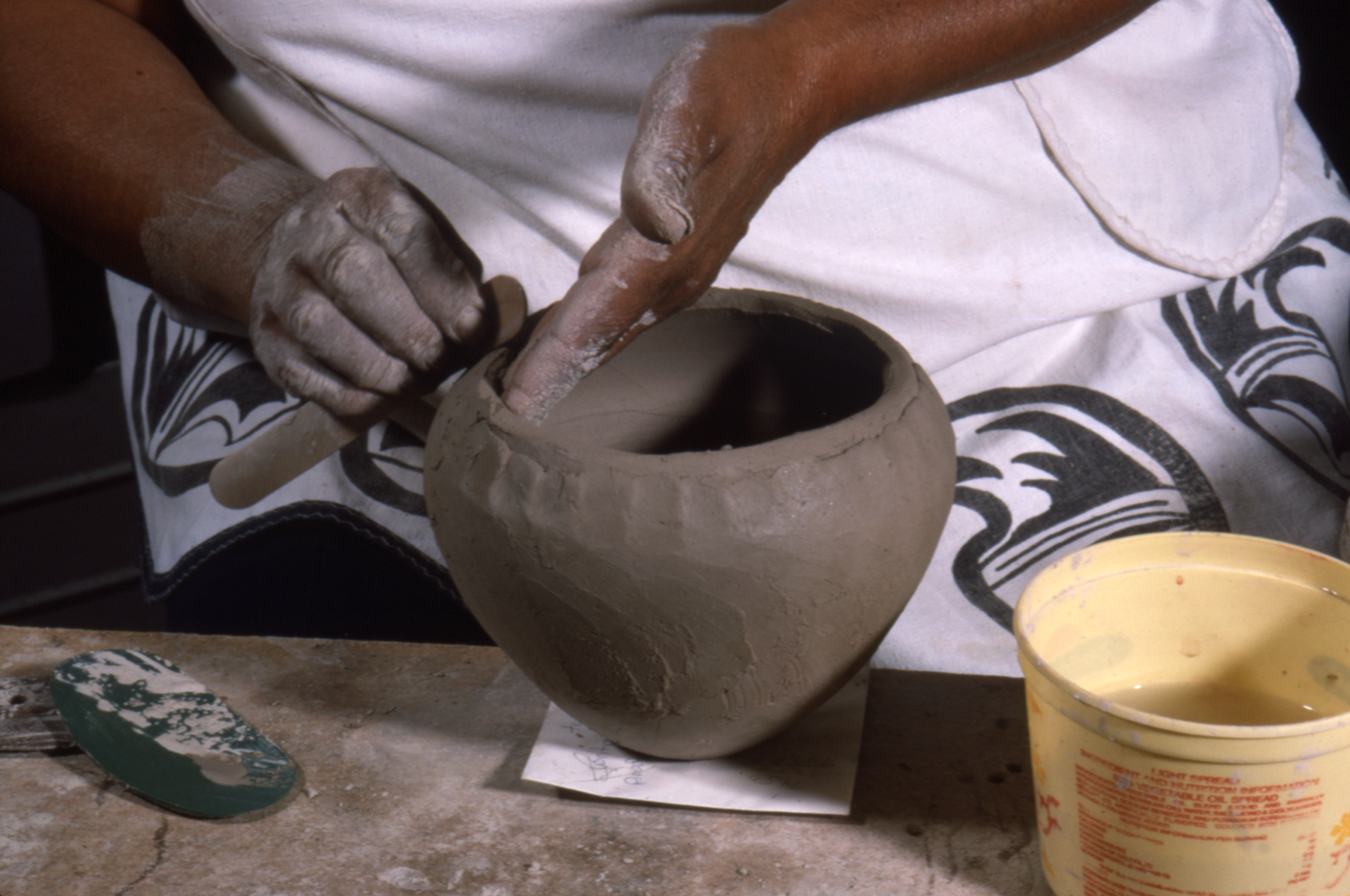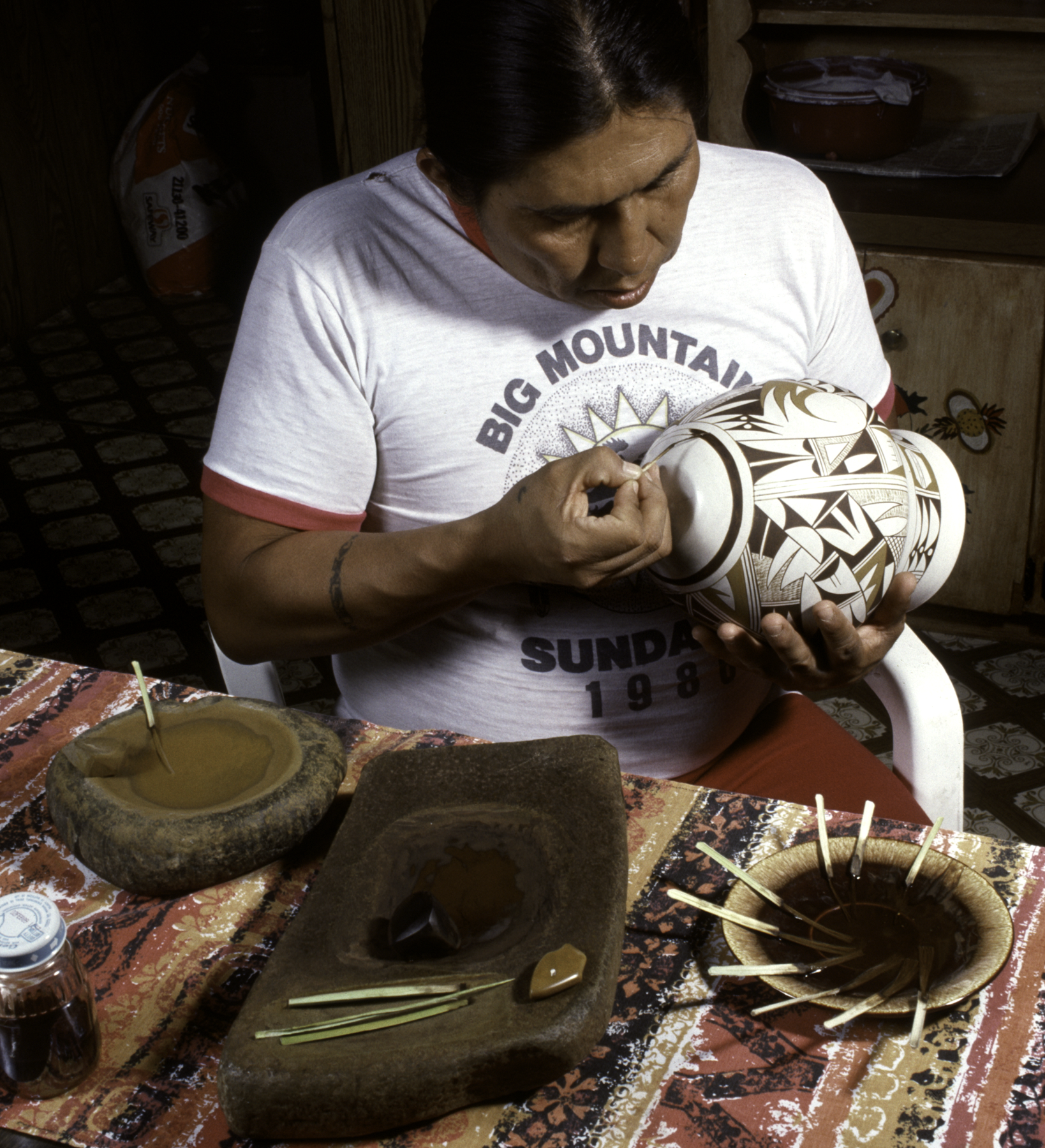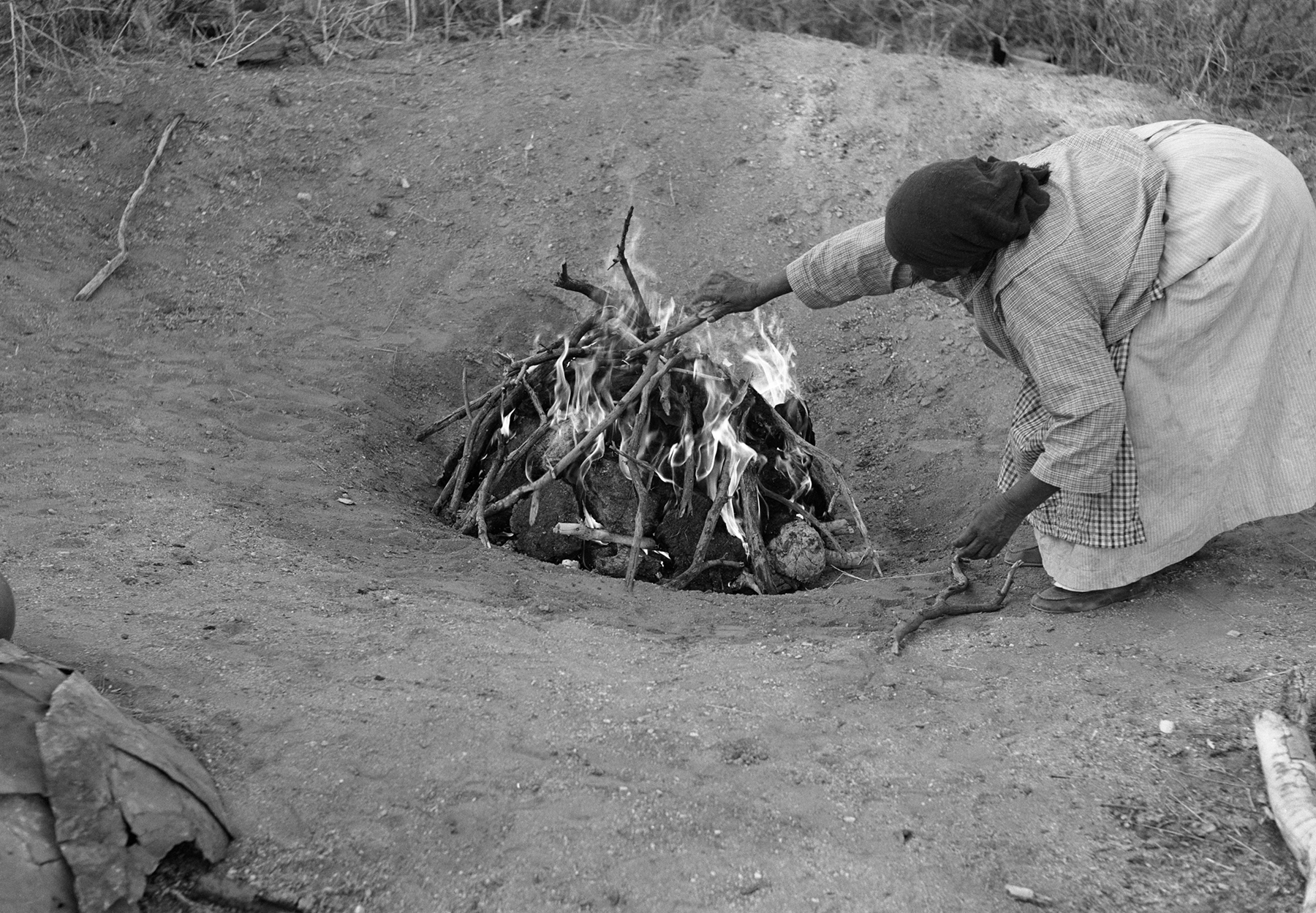From Earth to Fire: Making Pottery
Making a pot involves many steps. The pages below serve as an introduction to the various processes involved. These include selecting the type of clay, preparing the clay, adding temper, and forming, decorating, and firing the vessel.
Most Southwest Native pottery has been made using one of two hand-building methods: “paddle-and-anvil” and “coil-and-scrape.” These traditional techniques are used to build up the sides of a vessel and to create the final shape. Although some contemporary Native potters use a potter’s wheel, most pottery is still made by hand.
Pottery researchers rely on shapes, colors, type of temper, and designs to determine where, when, and by whom unidentified pots might have been made. Scientific techniques—including petrography, instrumental neutron activation analysis, and other chemical compositional analyses—allow researchers to pinpoint production locations. Prompted by traders, Southwest Indigenous potters began to sign their work in the early twentieth century, taking most of the guesswork out of identifying makers.

